Choosing the right dirt bike size is crucial for safety, comfort, and control. This guide helps riders of all levels select the perfect bike based on height, weight, experience, and engine size, ensuring an optimal riding experience for everyone.
Understanding Height and Weight Considerations
Height and weight are critical factors in selecting a dirt bike. Riders should ensure the ball of their foot touches the ground for stability. Weight influences bike handling, with lighter bikes suiting smaller riders and heavier bikes offering stability for larger riders.
Measuring Your Height for Dirt Bike Fit
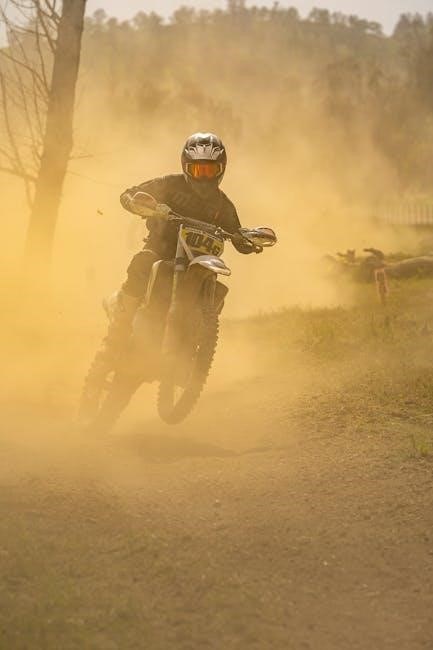
To ensure a proper fit, measure your height by standing flat-footed and measuring from the floor to the top of your head. This helps determine the ideal dirt bike seat height, which should allow the ball of your foot to touch the ground. A bike that is too tall can be unsafe, while one that is too low may restrict control. For younger riders, consider growth and whether the bike will remain suitable in the future. If the bike is slightly too tall, lowering kits or suspension adjustments can help. Always test ride a bike if possible to ensure comfort and confidence. Proper fit is key to safety and performance, especially for beginners learning to balance and maneuver.
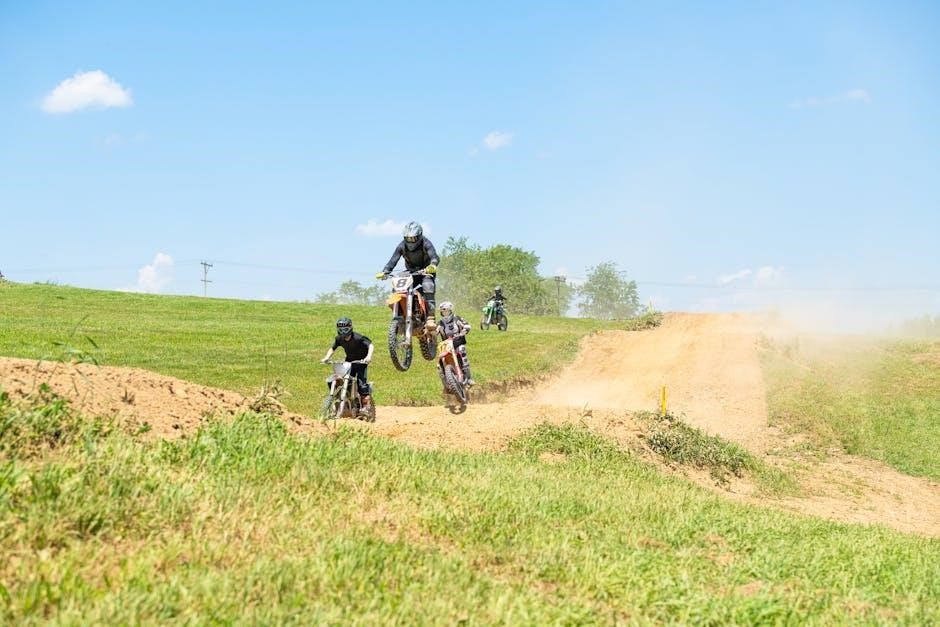
The Role of Weight in Bike Selection
Weight plays a significant role in dirt bike selection, as it affects handling, control, and overall performance. Lighter bikes are generally easier to maneuver, especially for beginners, while heavier bikes may offer more stability at higher speeds. Riders should consider their weight relative to the bike’s weight to ensure proper control. For example, lighter riders may find smaller, lighter bikes more manageable, while heavier riders might prefer bikes with more power and stability. Additionally, weight distribution impacts how the bike responds to rider input, making it crucial to choose a bike that balances power and weight appropriately. While engine size is often a focus, the bike’s overall weight is equally important for a safe and enjoyable riding experience. Riders should also consider how their weight affects suspension setup and handling, as this can be adjusted to optimize performance. Ultimately, matching your weight to the right bike ensures better control and confidence on the trails or track.
Experience Level and Bike Choice
Your experience level significantly influences dirt bike selection. Beginners benefit from smaller engines with manageable power, while intermediate riders can handle more powerful bikes. Advanced riders often opt for high-performance models tailored to their skill and riding style.
Dirt Bike Recommendations for Beginners
For new riders, selecting the right dirt bike is essential to ensure a safe and enjoyable learning experience. Beginners should prioritize bikes with manageable power, lower seat heights, and lighter weights. Models like the Kawasaki KLX 140 or Yamaha TT-R230 are excellent choices, offering a balance of power and control. These bikes typically feature four-stroke engines, which provide smoother power delivery and are more forgiving for learners. Additionally, bikes with adjustable seat heights or lower suspension can accommodate shorter riders, ensuring better stability and confidence. It’s important to avoid overly powerful engines, as they can be intimidating and difficult to handle for someone just starting out. Instead, focus on bikes with good low-end torque, which makes it easier to learn clutch control and basic riding techniques. Many manufacturers also offer “tamed” versions of their bikes, specifically designed for new riders. By choosing a bike that matches your skill level and physical stature, you’ll be able to progress more effectively and enjoy the sport with greater ease.
Intermediate Riders: Stepping Up Your Game
Intermediate riders seeking to advance their skills should look for dirt bikes that offer a balance of power and control. Models like the Honda CRF250F or KTM 250 XC-F are ideal, providing increased performance without overwhelming the rider. These bikes typically feature engines with more displacement, delivering additional power for tackling challenging terrain. However, they are still tuned to be manageable, allowing riders to refine their techniques without sacrificing stability. Suspension systems on these models are often more advanced, offering better handling on rough trails and jumps. Riders at this level should also consider the type of riding they’ll be doing most frequently. For trail riding, a bike with a slightly taller seat height and longer suspension travel is beneficial, while motocross-focused bikes may have stiffer suspension and higher ground clearance. Upgrading to an intermediate bike is about finding the right match for your growing skills and riding style, ensuring continued progress and enjoyment on the track or trails.
Advanced Riders: High-Performance Options
For advanced riders, high-performance dirt bikes are designed to deliver maximum power, precision, and control. Models like the Yamaha YZ450FX or KTM 450 SX-F are top choices, offering 450cc engines that provide exceptional speed and agility for challenging terrain. These bikes are built for experienced riders who can handle their robust power output and advanced suspension systems. The suspension on these models is highly tunable, allowing riders to customize settings for specific riding conditions, such as motocross tracks or technical trails. Advanced riders often prioritize lightweight frames and ergonomic designs that enhance maneuverability and reduce fatigue during long rides. Additionally, high-performance bikes may feature adjustable components like handlebars and footpegs, enabling riders to tailor the bike to their preferences. For those focused on motocross, bikes with higher ground clearance and stiffer suspension are ideal, while enduro riders may opt for models with enhanced durability and fuel capacity. Ultimately, advanced riders should seek bikes that align with their riding style and ambitions, ensuring a seamless connection between rider and machine for peak performance.
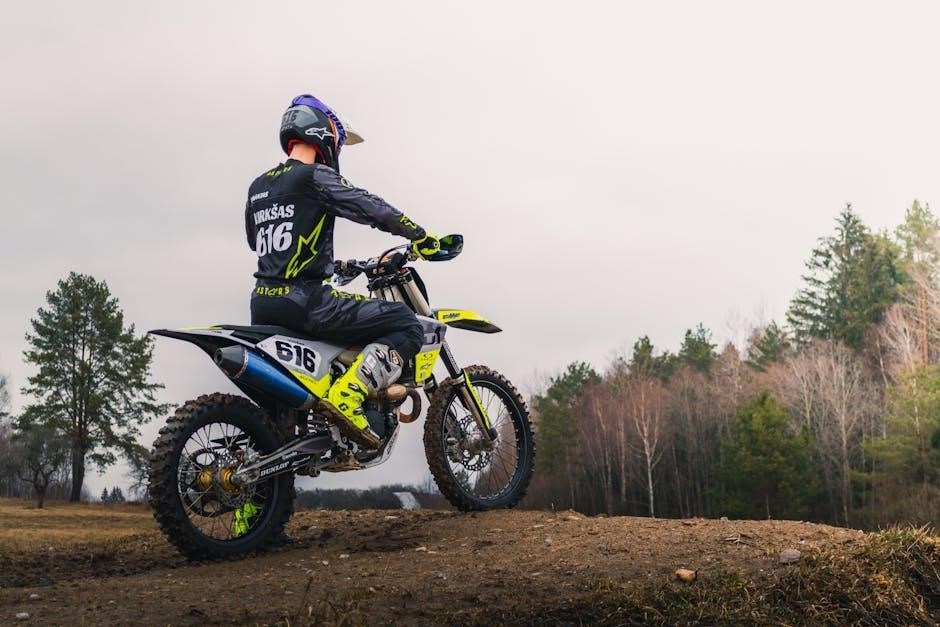
Engine Size and Its Impact on Performance
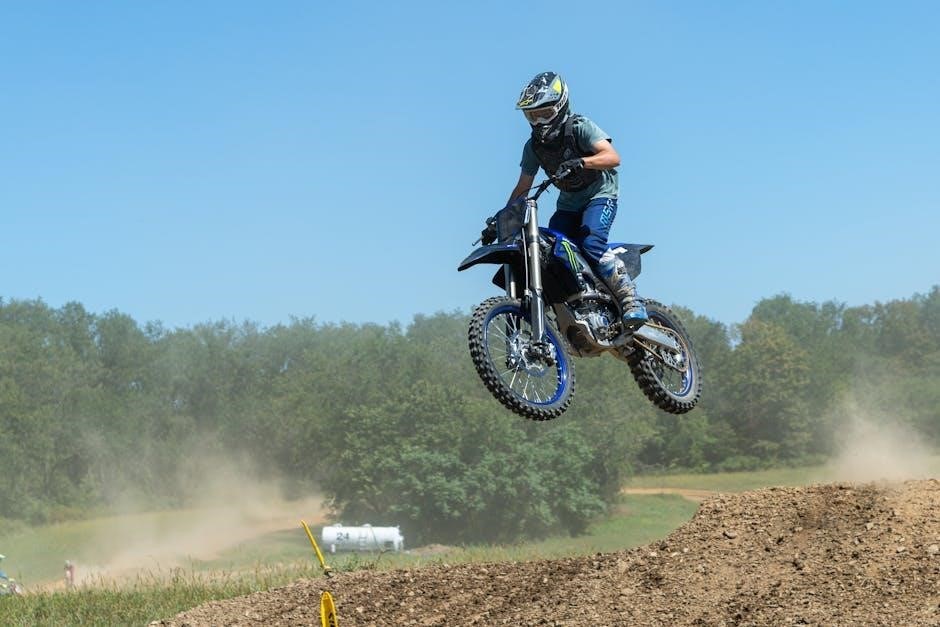
Engine size significantly affects a dirt bike’s performance, with larger engines delivering more power for advanced riders, while smaller engines offer better control for beginners. Matching engine size to skill level ensures optimal power and handling for a superior ride.
How Engine Displacement Affects Riding
Engine displacement plays a pivotal role in determining a dirt bike’s performance characteristics. A higher displacement engine, such as a 450cc, delivers more power and torque, making it suitable for advanced riders who need speed and agility for challenging terrains. Conversely, smaller engines like 125cc or 250cc are ideal for beginners, as they provide manageable power delivery, reducing the risk of losing control. The lower torque in smaller engines allows new riders to learn clutch operation and throttle control without the bike becoming unmanageable. Additionally, bike weight is often correlated with engine size, with larger engines typically resulting in heavier bikes, which can be more challenging to handle, especially for younger or shorter riders. Therefore, matching engine displacement to the rider’s skill level and physical stature is essential for a safe and enjoyable riding experience. Proper engine size selection ensures that the bike responds appropriately to the rider’s inputs, fostering confidence and skill development.
Engine Size Recommendations by Experience
Choosing the right engine size for your dirt bike is crucial, as it directly impacts performance and rideability. For beginners, a smaller engine, such as 125cc to 250cc, is recommended. These bikes offer manageable power delivery, making them easier to control and less intimidating for new riders. The lower torque in smaller engines also helps learners master clutch operation and throttle control without the risk of losing balance. Intermediate riders can step up to 250cc to 350cc engines, which provide a balance of power and handling, suitable for trail riding or light motocross. Advanced riders often opt for 450cc or higher engines, delivering high performance for competitive racing or challenging terrains. Engine size should also consider the rider’s weight and height, as larger engines often result in heavier bikes. Ultimately, matching engine displacement to skill level ensures a safer, more enjoyable ride, allowing riders to progress confidently without feeling overwhelmed by the bike’s power. Proper engine size selection is key to maximizing both performance and rider comfort.
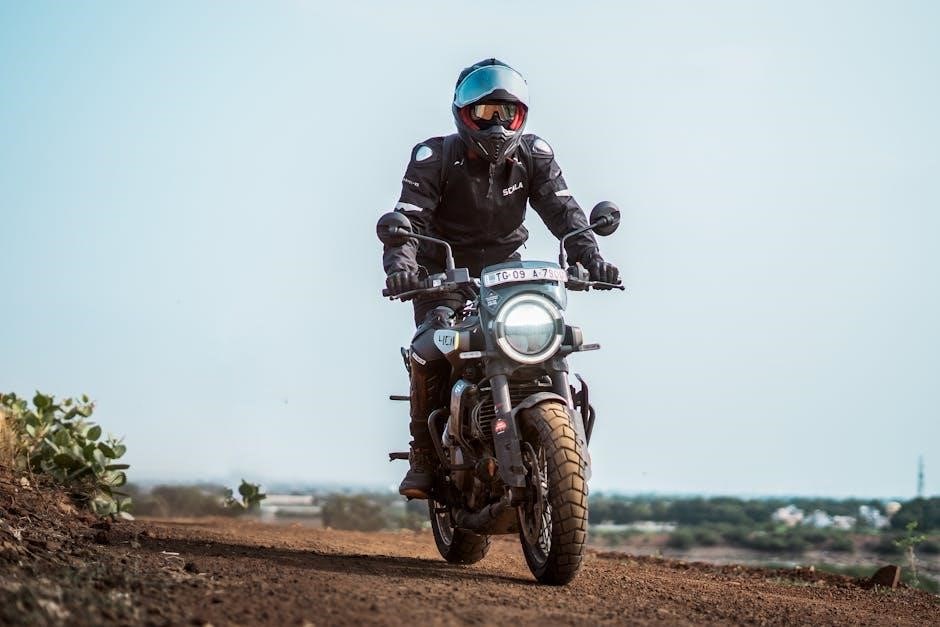
Purpose of the Dirt Bike
The purpose of a dirt bike determines its design and features. Trail bikes are built for endurance and versatility, while motocross bikes are optimized for speed and jumps. Choosing the right type ensures the bike meets your riding goals and terrain demands.
Trail Riding vs. Motocross: Key Differences
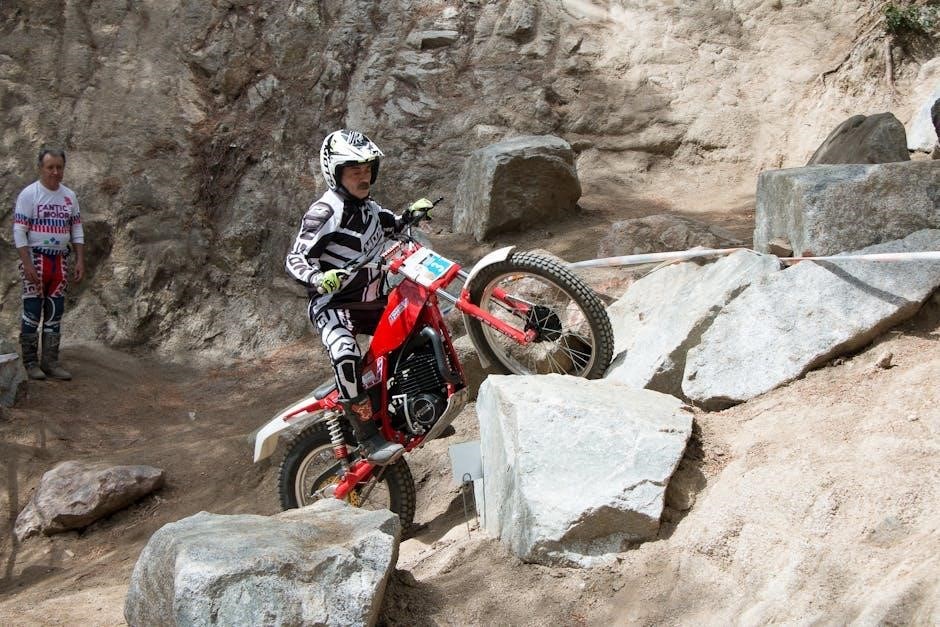
Trail riding and motocross are two distinct disciplines with unique demands, requiring different bike setups. Trail bikes are designed for endurance and versatility, featuring lower seat heights, softer suspension, and added features like headlights for off-road adventures. They are ideal for navigating diverse terrain, such as single tracks and cross-country trails, emphasizing comfort and control over long distances.
Motocross bikes, in contrast, are built for speed and agility on closed circuits. They have higher seat heights, stiffer suspension, and larger rear wheels (typically 19 inches) to handle jumps and rough track conditions. Motocross bikes are lighter and more powerful, prioritizing performance over comfort, making them best suited for competitive racing and advanced riders.
Understanding these differences is crucial for selecting the right bike. Trail riding focuses on exploration and endurance, while motocross emphasizes speed and precision. Choosing the correct type ensures the bike aligns with your riding style and terrain preferences, enhancing both safety and performance.
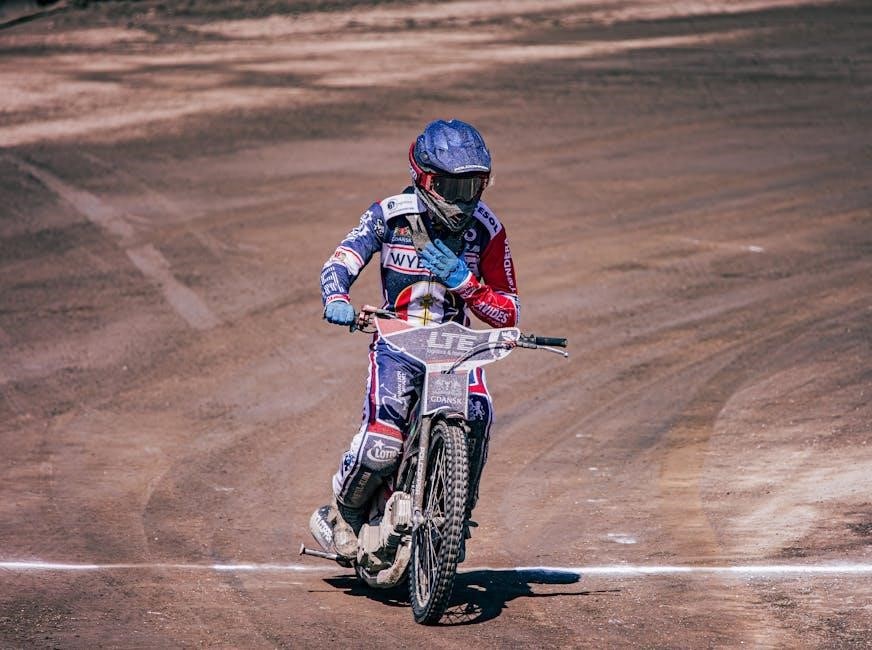
Choosing the Right Bike for Your Riding Style
Your riding style and preferences play a significant role in selecting the perfect dirt bike. Trail riding and motocross require different bike setups, so it’s essential to match your bike to your riding goals. For trail riding, look for bikes with lower seat heights, softer suspension, and added features like headlights for off-road adventures. These bikes are designed for endurance and versatility, making them ideal for navigating diverse terrain such as single tracks and cross-country trails.
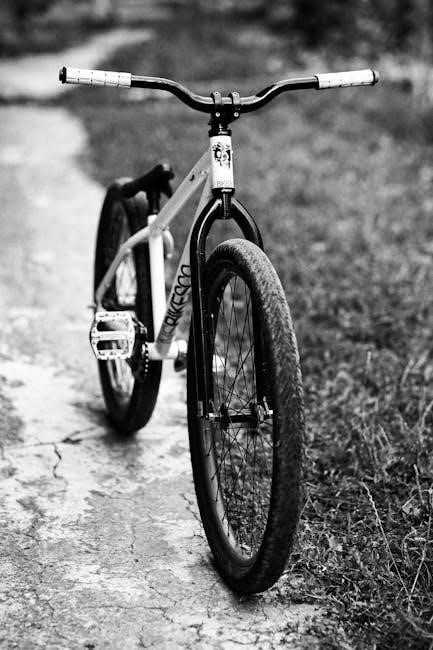
If you’re into motocross, prioritize bikes with higher seat heights, stiffer suspension, and larger rear wheels (typically 19 inches) to handle jumps and rough track conditions. Motocross bikes are lighter and more powerful, built for speed and agility on closed circuits. They are best suited for competitive racing and advanced riders who value precision and performance.
For casual or beginner riders, consider bikes that offer a balance of comfort and capability. Models like the Beta XTRAINER or Yamaha YZ125X are great for learning and adapting to different terrains. Ultimately, test-riding a bike is the best way to ensure it fits your style and preferences, providing the confidence and control you need for an enjoyable ride.
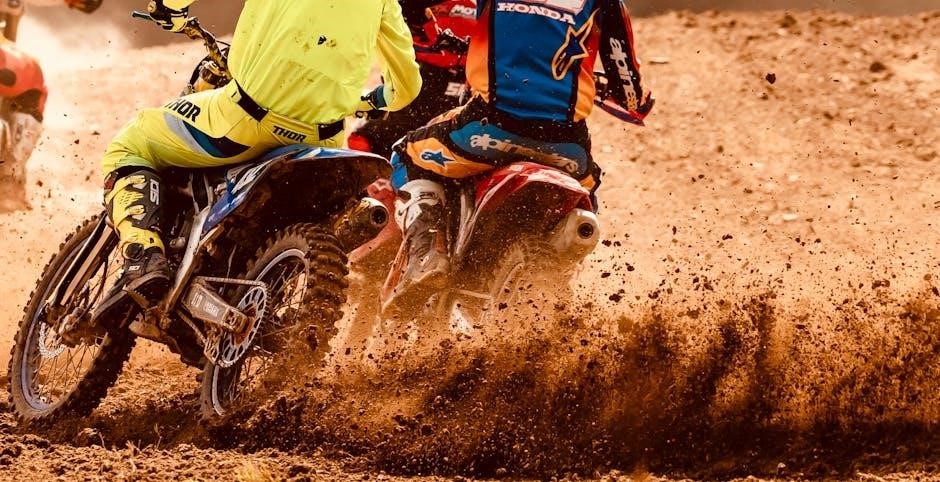
Adjusting Your Dirt Bike for the Perfect Fit
Properly adjusting your dirt bike ensures comfort, control, and safety. Lowering the seat height, tuning suspension, and modifying ergonomics can tailor the bike to your needs, enhancing your riding experience and confidence on the trails or track.
Lowering the Seat Height
Lowering the seat height of your dirt bike can significantly improve comfort and control, especially for shorter riders. One effective method is installing a lowering kit, which reduces the overall ride height by adjusting the suspension or chassis. Additionally, shaving or replacing the seat with a lower-profile option can drop the seat height by 1-3 inches, though this may reduce cushioning. Another option is adjusting the suspension sag, which not only lowers the bike but also enhances handling by ensuring proper weight distribution. For a more permanent solution, some riders opt for a “seat drop” modification, which alters the bike’s ergonomics to better suit their height. It’s important to test the bike’s height before purchasing, as a bike that feels too tall can be unsafe and difficult to manage. Lowering the seat height ensures the ball of your foot can touch the ground, providing stability and confidence, particularly for beginners learning essential riding techniques.
Suspension Adjustments for Ride Height
Adjusting the suspension is a practical way to fine-tune your dirt bike’s ride height for optimal comfort and control. By modifying the suspension settings, you can lower the bike to better suit your height and riding style. Start by setting the correct sag, which ensures proper weight distribution and handling. Sag is the amount the suspension compresses under the rider’s weight and is typically adjusted by preload. For most riders, a sag range of 95-105mm at the rear and 45-55mm at the front is ideal. If the bike still feels too tall, consider reducing the preload or adjusting the compression settings to lower the ride height further. However, be cautious not to over-lower the bike, as this can compromise ground clearance and stability. Always test the bike after adjustments to ensure it feels balanced and responsive. For precise tuning, consult a professional mechanic or use a detailed suspension setup guide. Proper suspension adjustments can make a significant difference in your riding experience, ensuring safety and confidence on the trails or track.
Other Modifications for Comfort and Control
Beyond suspension adjustments, several other modifications can enhance your dirt bike’s comfort and control. One common modification is shaving or replacing the seat to lower the ride height. Seats designed for a lower profile can reduce the height by up to an inch, though they may offer less cushioning. Additionally, handlebar height and position can be adjusted to suit your riding posture, improving leverage and maneuverability. Footpeg height and position are also customizable, allowing for better ergonomics and control. For shorter riders, installing a lowering kit is a popular solution, which typically includes shorter forks and a lowered shock. These kits can drop the bike’s height by several inches, making it more accessible. However, be mindful that lowering the bike too much can affect its performance on rough terrain. Other modifications include lighter wheels and components, which can improve handling and make the bike easier to manage, especially for younger or less experienced riders. Each modification should be carefully considered to ensure it aligns with your riding style and the specific demands of your terrain. By tailoring your bike to your needs, you can achieve a more comfortable and controlled ride.
Selecting the right dirt bike size is a critical decision that impacts safety, comfort, and overall performance. By considering factors such as height, weight, experience level, and riding style, riders can ensure a perfect fit. Whether you’re a beginner or an advanced rider, understanding engine size, suspension adjustments, and modifications like seat height and handlebar positioning can make a significant difference. Always test ride bikes when possible and consult sizing charts to find the ideal match for your needs. Remember, a well-fitted dirt bike not only enhances your riding experience but also boosts confidence and control on the trails or track. With the right bike, you’re ready to embrace the thrill of dirt biking and make unforgettable memories. Happy riding!
